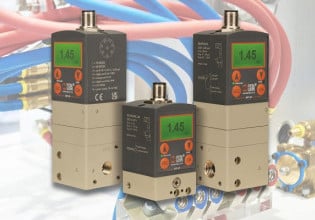ForwardX Robotics Delivers Compact Power With New Max 1500-L Slim AMR
ForwardX Robotics’ latest autonomous mobile robot, the Max 1500-L Slim, is compact yet can lift incredibly large payloads. The new AMR is part of the company’s Max Series for logistics and manufacturing.
Well-known autonomous mobile robot (AMR) developer ForwardX Robotics has recently expanded its Max line of AMRs to include the Max 1500-L Slim. These AMRs will likely be used in heavy manufacturing and warehouse operations, especially where large components or products are transported.
The Max 1500-L Slim is the latest addition to ForwardX’s Max Series AMRs. Image used courtesy of ForwardX Robotics
Hazards in the Warehouse
Unfortunately, accidents occur too often in the warehouse. Forklift collisions with objects or pedestrians often end in a fatality or a permanent, debilitating injury. According to the National Safety Council, the United States saw 70 forklift-related deaths in the workplace and 7,290 nonfatal injuries in 2020. However, workers run the risk of injury even without using a forklift. According to the Occupational Safety and Health Administration, ergonomics and musculoskeletal disorders from lifting, bending, and repetitive motion are also major warehouse hazards.
Not only are forklifts and lifting teams hazardous, but training forklift operators is expensive, as is maintaining a workforce of lifters, packers, and pickers. More so, the times when more warehouse workers are needed are when fewer workers are available. During the winter holidays, there is an increased demand for goods, but often fewer workers to pick, package, and ship these products.
AMRs are taking over as the dominant means of transporting raw materials and finished goods around warehouses, shipping centers, and other inventoried areas. They are a safer, less expensive, and more efficient alternative to lifting teams, forklifts, and other labor-intensive methods.

ForwardX's Max Series AMRs aiding workers in a beverage warehouse. Image used courtesy of ForwardX Robotics
Autonomous Mobile Robots and Logistics
AMRs are increasing in numbers in logistics environments. They can pick and transport objects while keeping workers safe and optimizing travel paths for the most efficient routing. Poor communication between forklift drivers can lead to slowdowns as two forklifts enter the same aisle between stock shelves. With AMRs, this communication can be established ahead of time every time.
AMRs also require smaller spaces instead of using large lanes for forklifts. The limiting factor is how small an AMR can be while still moving heavy merchandise. There is a drive to make small yet powerful AMRs that can navigate narrow rows and move heavy objects.

ForwardX's Max 1500-L Slim AMR is compact but has a payload of 1500 kg. Image used courtesy of ForwardX Robotics
ForwardX Max 1500-L Slim
Enter the Max 1500-L Slim from ForwardX. As the name implies, the AMR is compact, measuring only 245 mm tall but capable of lifting up to 1500 kg. Its range of motion allows it to accurately dock with conveyor belts, packing and unpacking stations, raw material inputs, and other machine interfaces across multiple equipment suppliers.
At the heart of the Max 1500-L Slim is a 360-degree obstacle detection and avoidance system. It is constantly scanning for other objects, such as workers, forklifts, or other AMRs, taking the appropriate actions to avoid a collision. This design is much safer than relying on a worker's vision or machine vision with directional cameras.
Tiny But Mighty
The Max 1500-L Slim's lifting capacity is phenomenal. While not designed for this application, it could slide under most cars and lift all four tires off the ground. The heavy lifting performed by this AMR has the potential to save a lot of workers’ backs and prevent numerous forklift injuries.






